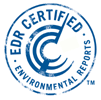HOW TO INTERPRET YOUR WATER TEST
A Guide to Water Quality Testing for Private Wells
The EPA sets water quality standards that public drinking water supplies must meet. Private wells are not regulated, but the EPA standards are widely "recommended". There are primary standards, which are related to health, and secondary standards, which pertain to aesthetic qualities of the water, like taste or staining characteristics.
The general quality of your water can be determined by comparing the "results" of your water test to the E. P. A. "standards". If your water values exceeds the recommended "standard" or concentration, you might want to consider ways to filter or clean up the water. Since we do not offer water filter installation, we are providing you with the following information so that you may make an informed decision regarding the possible use of a water filter/filtration system.
FLUORIDE - Fluoride occurs naturally in local bedrock wells. It has been considered beneficial by the EPA at lower concentrations, but it is a health concern at higher concentrations. (Call your doctor or dentist with questions about fluoride).
CHLORIDE - Chloride is present in most waters, and is not considered harmful by the EPA at concentrations up to 250 mg/L. Higher concentrations can occur naturally along the seacoast, or may indicate road salt use. Since sodium chloride is a major component of sewage, high chloride may indicate sewage contamination. High chloride may be harmful to metallic pipes, and may indicate an unhealthy level of salt for people.
NITRATE and NITRITE - nitrate is considered unhealthy because of its conversion in the body to nitrite. Nitrite causes methemoglobinemia (blue baby syndrome), a serious condition harmful to infants and to women during pregnancy. nitrite can react under acidic conditions to form nitrosamines, which are known carcinogens. Both nitrate and nitrite are found in sewage and wastes from humans and farm animals. Nitrate is a component of fertilizer, so agricultural run-off may be responsible for elevated nitrate levels in your water.
COLIFORM BACTERIA - Coliform bacteria are commonly found in the soil and in surface water, on leaves and rocks. They are so common that if surface water has gotten into your well, coliforms are almost surely present. If coliform bacteria are present in your well water, there is also the possibility that harmful chemicals or disease causing organisms (which may be present on the surface) may also have found their way into your well.
E.COLI BACTERIA - E.Coli bacteria are a subset of coliform bacteria. They are present in the intestines (and feces) of warm blooded mammals (including humans). Their presence in your drinking water indicates fecal contamination, and possibly the presence of disease causing organisms.
SODIUM - Sodium is naturally present in nearly all waters. Water near the seacoast, or water softened with sodium-form water softeners may have higher concentrations. High sodium may also indicate contamination from human or animal waste disposal, or from landfill leaching.
HARDNESS - Water hardness results from the presence of certain metals, usually calcium and magnesium. Hard water is generally not known to be unhealthy, but it can be aesthetically unpleasant. A soap scum can appear on tubs and showers, and a filmy substance may develop in your toilet. You may also notice it takes a lot of soap to work up a lather. Also, this can cause an undesirable level of scale build-up inside your pipes and fixtures (including your water heater).
pH - pH is a measure of the acidic or basic character of your water. Acidic water is corrosive to metal pipes and may impart a metallic taste to the water.
IRON - Iron can stain laundry, sinks, tubs and fixtures a reddish or orange color and may add a bitter or astringent taste to the water.
MANGANESE - Manganese can stain laundry and porcelain a blackish or grayish color and may add an unpleasant taste to the water.
LEAD - Lead is a common metal found throughout the environment in paint, air, soil, household dust, food, porcelain, pewter and in water. Lead rarely occurs naturally in rivers or lakes, but leaches into your drinking water from brass or chrome-plated brass faucets, or from pipes soldered with lead-based solder. Lead build ups in your body and can damage the brain, red blood cells, and kidneys. The greatest risk is to young children and to women during pregnancy.
ARSENIC - Arsenic in water causes cancer and has been found in wells and public water supplies throughout Connecticut. It is very expensive to remove or filter out of your drinking water.
Private Water Wells - What You Can Do
For more information about drinking water, wells, water contamination, Superfund Sites, contaminated areas in New England, etc. the following EPA site provides extensive information: www.epa.gov/safewater/
Do I need a water test if the water supply is "town water", "city water" or "public"?
Generally, you do not need to test the water in your potential home if it is a "public water supply", supplied by the town or city. Towns and cities are required to supply water that has met EPA standards for safe drinking. However, there are a couple of instances that come to mind where you might want to perform some testing:
A "lead in water" test can disclose if lead is leaching into your drinking water either from the pipes leading into the home, or from the pipes/pipe solder in the home. Very occasionally, towns and cities do experience problems with their water supplies. We suggest that you contact the town where the home is located and ask:
- Does their water supply currently meets ALL EPA requirements for safe drinking?
- Do they ever experience any problems with such things as supply, bacteria, etc.?
For more information, go to...


